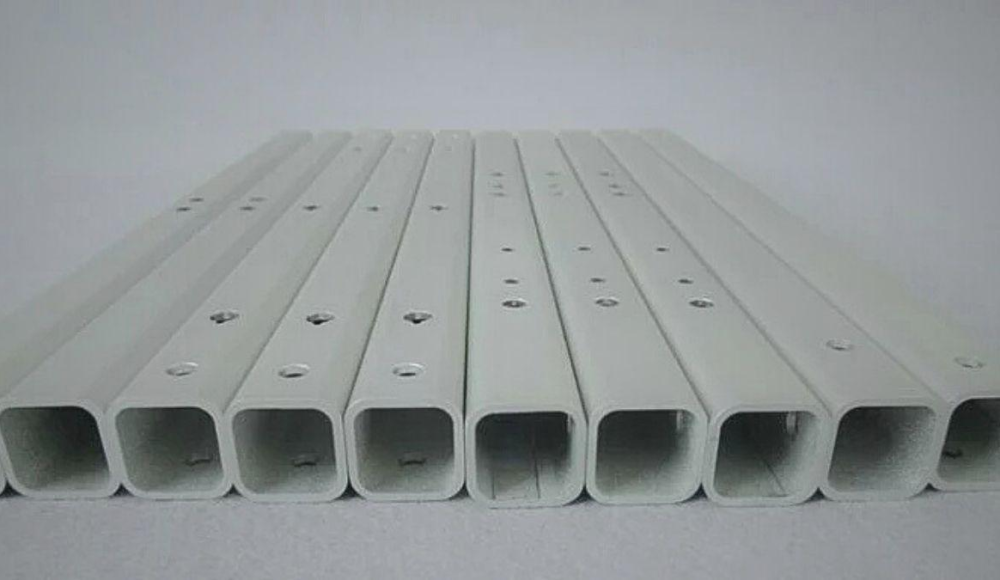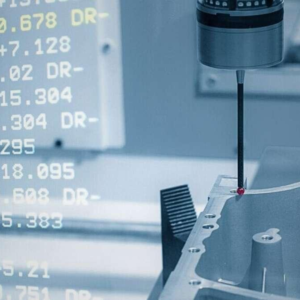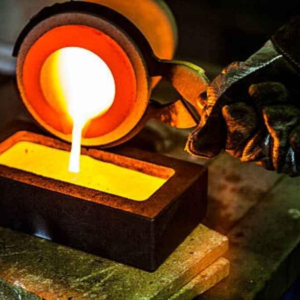Are you struggling to find out which aluminum alloy is suitable for your CNC project? Choosing the wrong alloy will result in a cost and time wastage. Hence, it’s always good to grasp the strengths and weaknesses of the various aluminum alloys,
So the project will not likely fail. To make the right decisions to improve your machining results, explore the blog information.
Mechanical Properties of Aluminum Alloys for CNC Machining
Aluminum alloys are preferred in CNC machining because of their peculiar mechanical properties. These alloys are categorized mainly into two groups: wrought and cast. The wrought aluminum including the 6061 and 7075 s provides the best strength, erosion, and machinability characteristics.
For example, the 6061 alloy has good weldability and moderate strength, effectively used in structures. On the other hand, the 7075 has a high strength-to-weight weight ratio, commonly employed in the aerospace sector. A356 is a cast aluminum alloy. It features high fluidity and can easily be modeled into complex shapes. These properties are important to be recognized in CNC machining as they define tool wear, cutting, speeds, and general efficiency of the process.
How to Select the Aluminum Alloy for CNC Machining
Before choosing the aluminum alloy for CNC machining you ought to make the following considerations. The first step is to evaluate the needs that the particular application will serve. As in various projects, some may require higher strength, weight, and corrosion resistivity than the other. For instance, 6061 or 7075 alloys are perfect for producing lightweigh, and strong automobiles components.
Further consideration may include alloys’ machinability. Some alloys are easier to machine than others which influences production rate and tool consumption. In general, wrought alloys are easier to machine than cast alloys. Also, think about the possibilities of heat treatment and types. Heat-treatable alloys typically offer improved mechanical characteristics which are important for high-performance usage.
Last but not least consider the application where the final piece is going to be used. In case the components will be used in environments with high humidity or chemicals, choose the alloys with better corrosion properties (5083 or 6063). If these considerations are observed in your CNC machining projects, then you can make a decision that fully optimizes performance and cost.
Here’s a comparative analysis that includes aluminum alloys commonly used in CNC machining:
| Alloy | Strength | Machinability | Fatigue Resistance | Corrosion Resistance | Endurance | Cost |
| 6061 | Moderate | Good | Moderate | Excellent | Moderate | Moderate |
| 7075 | High | Fair | High | Good | High | Higher |
| 5083 | Moderate | Good | Moderate | Excellent | Moderate | Moderate |
| 2024 | Very High | Fair | High | Moderate | High | Higher |
| A356 | Moderate | Good | Moderate | Good | Moderate | Lower |
| 6063 | Moderate | Excellent | Moderate | Good | Moderate | Moderate |
| 5052 | Moderate | Good | Good | Excellent | Moderate | Moderate |
| 2011 | High | Excellent | Moderate | Moderate | Low | Moderate |
| 3003 | Low | Excellent | Low | Good | Low | Lower |
| 7079 | High | Fair | High | Good | High | Higher |
Common Aluminum Alloys For CNC Machining
Every CNC series of alloys is preceded by a number that represents the element added to pure aluminum in its production. Here are the key aluminum alloy series used in CNC machining:
- 2000 Series Alloys: These series alloys have medium to strong material, mainly copper. In some cases, magnesium is added as an extra ingredient. These alloys are used by designers to manufacture parts of aircraft to fulfill high-strength demands.
- 3000 Series Alloys: Manganese stands as the primary alloying element in this series. However, the corrosion resistance of these alloys is quite good with moderate mechanical strength. They cannot be heat treated at all which in a way narrows down their use.
- 5000 Series Alloys: Magnesium is the main alloying component, which provides high corrosion properties. Alloys like 5052 and 5083 must be used for parts to be used in marine and chemical industries.
- 6000 Series Alloys: These alloys are the most popular among all the above series. Since they are made up of magnesium and silicon. The most well-known grades are 6061-T6 and 6082-T6 as they have suitable characteristics and mechanical parameters.
- 7000 Series Alloys: These are characterized by Zinc as the primary alloying element yielding to the “aerospace-grade” commodities. Such alloys are prized for their ability to exhibit high tensile strength and yield strength of over 500 MPa.
Aluminum Alloy 2011
Aluminum alloy 2011 features good workability and high mechanical properties. Its main additive is cwhichr which improves mechanical characteristics.
Key Characteristics
- Machinability: Good machinability, which gave room for production and less wear and tear on the tools.
- Strength: Very strong steel for high-resistance stance applications.
- Corrosion Resistance: Satisfactory for applications where conditions are not as corrosive; use of coatings will enhance the protection.
- Weldability: Limited because of their high copper content; not suitable for welding purposes.
Typical Applications
- Precision Parts: Used for fasteners and gears.
- Automotive Components: Lightweight Components, but strength is a paramount consideration.
- Aerospace Applications: High-strength structural elements that are not categorized under structural elements.
Aluminum Alloy 2014
Aluminum alloys 2014 widely used in industries because it has high strength and good machinability. It mainly consists of copper which enhances its characteristics.
Key Features
- Strength: Extremely high, suitable for load-bearing applications.
- Machinability: It is easy to machine and suitable for complex-shaped parts.
- Corrosion Resistance: Moderate; may require some form of coating gs in a very abrasive environment.
- Weldability: Low
Common Uses
- Aerospace: Applied in aircraft structures where strength is important.
- Automotive: Applicable e for the stress of car parts.
- Military: Used in the tough parts of military products.
Aluminum Alloy 2017
Aluminum alloy 2017 is classified as having high strength and can easily be machined. It mainly consists of cwhichr that improves its mechanical characteristics.
Key Features
- Strength: Has very high tensile strength and is, therefore, appropriate for high-stress situations.
- Machinability: Able to be easily machined into a wide variety of shapes and designs.
- Corrosion Resistance: Moderate; usually needs to be treated with a coating of some sort.
- Weldability: Limited; not recommended for welding as it contains copper.
Common Uses
- Aerospace: Very common in aircraft parts and assemblies.
- Automotive: Suitable for automotive applications, particularly high-strength componentry.
- Industrial Applications: Applied in the product performance parts.
Aluminum Alloy 2024
Aluminum alloy 2024 is highly valued for its strength-to-fatigued ratio as well as other mechanical properties. This alloy mainly consists of copper, which highly improves its mechanical characteristics.
Key Features
- Strength: High tensile strength; good for frameworks.
- Machinability: Able to be easily machined and therefore can be mass produced.
- Corrosion Resistance: Moderate; needs to be coated for outdoor application.
- Weldability: Moderate; has low weldability due to copper content.
Common Uses
- Aerospace: Particularly applicable in aircraft structures and parts.
- Military: Able to withstand high-stress conditions in military devices.
- Transportation: Usareasn area that needs high weight bearing and strength.
Aluminum alloy 3003
Aluminum alloy 3003 is the most suitable for corrosion, mainly due to its good workability. Its main element is manganese as an alloy in the material.
Key Features
- Strength: Average tensile strength, which may be found in multiple purposes.
- Machinability: Easy to form and fabricate hence good machinability.
- Corrosion Resistance: Very good; has a high level of rust and corrosion resistance.
- Weldability: Good; easily weldable severalber of methods.
Common Uses
- Food and Chemical Handling: It is commonly used in storage tanks and anchemichemical-relate-delatedent.
- Cookware: Usually seen in pots and pans because of its strength.
- Architectural Applications: Applied as a decoration and as load-bearing structures in constructions.
Aluminum Alloy 5052
Aluminum alloy 5052 is appreciated d for corrosion resistance and reasonable weldability. This material mainly includes magnesium as the principal alloying component.
Key Features
- Strength: Average strength for use in different areas.
- Machinability: Good machinability and can easily be fabricated.
- Corrosion Resistance: Good; highly resistant to salty and various types of corrosive environments.
- Weldability: Excellent; can be easily welded, thus is perfect for use where structures are required.
Common Uses
- Marine Applications: is Wood used often in constructing boats and other items of marine use.
- Automotive: Used in fuel tanks, and other parts of automobiles, for example.
- Industrial Equipment: Applied in pressure vessels and chemical equipment.
Aluminum Alloy 5083
Aluminum alloy 5083 has been found to have excellent corrosion features, as well as high strength.
Key Features
- Strength: Ia t has a high strength that it makes suitable for high-usage applications.
- Machinability: Ease of fabrication since it possesses good machinability.
- Corrosion Resistance: Good; especially suitable for use in marine environments in contact with aggressive chemicals.
- Weldability: Excellent; weldable in many ways and very easily.
Common Uses
- Marine Applications: Mainly used in ship construction and marine parts.
- Pressure Vessels: Occurred mainly in tanks and pressure vessels.
- Architectural Components: Applied to structural members of construction works where steel is exposed to the weather.
Aluminum Alloy 6061
Aluminum alloy 6061 is classified among the most common and popular aluminum alloys in the world. It mainly includes magnesium and silicon as their principal alloying constituents.
Key Features
- Strength: It has moderate to high strength that makes it suitable for many uses it can be used to bond metals and plastics.
- Machinability: Good workability, which enables it to be readily shaped and bent on the construction site.
- Corrosion Resistance: It is quite good; it offers a sufficient barrier against rusting and corrosion.
- Weldability: Excellent; easy to weld through different welding processes.
Common Uses
- Structural Components: Common in construction and structural purposes.
- Automotive Parts: Often used in automotive frames and the that which make up the frame.
- Aerospace Applications: Applied in aircraft parts where the best combination of low density and high strength is needed.
Aluminum Alloy 6063
Aluminum alloy 6063 is appreciated for its good extrusion characteristics and smooth skin finish. It mainly has magnesium and silicon as its principal alloying constituents.
Key Features
- Strength: These mortars are of moderate strength and can be used for a wide variety of architectural purposes.
- Machinability: Excellent moldability, which means that it is easy to work with by forming and machining.
- Corrosion Resistance: Good; highly resistant to corrosion in environments.
- Weldability: Excellent, easily weldable, and can be joined.
Common Uses
- Architectural Applications: Common applications in window frames, doors, curtains, walls, and the like.
- Extrusions: It is used in numerous profiles of structural parts made of extruded products.
- Transportation: Applied in parts for buses and trailers because it is lightweight.
Aluminum Alloy 6082
Aluminum alloy 6082 is appreciated for its fine mechanical characteristics and high level of corrosion protection. It mainly has magnesium and silicon as its principal alloying components.
Key Features
- Strength: High strength, thus can be used in load-bearing structures.
- Machinability: Easy to fabricate and form thus making it easy to work with through various industrial processes.
- Corrosion Resistance: Very good; offers good defense against the external conditions that may prevail in the environment.
- Weldability: Excellent.
Common Uses
- Structural Applications: Mainly used in construction sites, bridges, and cranes.
- Transportation: Often used in car frames and car bodies.
- Manufacturing: Applied in the manufacture of several parts for industries.
Aluminum Alloy 7050: Key Facts
The aluminum alloy 7050 is widely known for its good strengths and better stress corrosion resistance. It mainly consists of zinc as an alloying component along with magnesium and r few components.
Key Features
- Strength: Extremely high strength, especially suitable for aerospace high-stress-stress uses.
- Machinability: Has good machinability which can be fabricated effectively way.
- Corrosion Resistance: It is good, especially when used against stress corrosion cracking.
- Weldability: Restricted; ordinarily not advised for welding as a result of its alloying constituents.
Common Uses
- Aerospace Components: Being widely applied in aircraft structures and components where high strength is needed.
- Military Applications: Good for long-wearing parts in military applications.
- Transportation: Applicable in high-performance vehicles and parts.
Aluminum Alloy 7075
Aluminum alloy 7075 is considered a to be high strength and high toughness material. Mainly, it is an alloy of zinc with the addition of magnesium and copper in small proportions.
Key Features
- Strength: Very high strength is characteristic of this product and that is why it is used in aerospace and military industries.
- Machinability: Good workability, thus enabling easier manufacturing processes to be performed on it.
- Corrosion Resistance: Moderate; special coatings are needed in severe conditions.
- Weldability: Restricted; not suitable for welding because of its contents; an alloy.
Common Uses
- Aerospace Components: Often applied in the wing and fuselage of aircraft.
- Military Applications: It is usually used in military vehicles and equipment.
- Sporting Goods: Applied in racing cycles and other sporting goods.
Summary
This article is presented by Tops Precision. It offers valuable insights to help readers choose aluminum alloys. The information will help you make informed decisions about selecting the right alloy for your needs. If you have any queries, please feel free to reach out to us.




1 thought on “CNC Material Series: Pros and Cons of Different Aluminum Alloys”